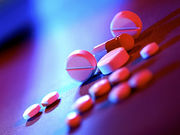Emergency department visits related to dextroamphetamine-amphetamine up for adults
TUESDAY, Feb. 16, 2016 (HealthDay News) — Nonmedical stimulant use has increased among adults in recent years, according to a study published online Feb. 16 in the Journal of Clinical Psychiatry.
Lian-Yu Chen, M.D., Ph.D., from the Johns Hopkins Bloomberg School of Public Health in Baltimore, and colleagues examined national trends in prescriptions, nonmedical use, and emergency department visits involving dextroamphetamine-amphetamine and methylphenidate in adults and adolescents. Data were obtained from three national surveys conducted between 2006 and 2011: National Disease and Therapeutic Index, National Survey on Drug Use and Health, and Drug Abuse Warning Network.
The researchers found that in adolescents there was a decrease over time in treatment visits involving dextroamphetamine-amphetamine and methylphenidate. Nonmedical dextroamphetamine-amphetamine use remained stable, and there was a 54.4 percent decrease in nonmedical methylphenidate use. Dextroamphetamine-amphetamine- and methylphenidate-related emergency department visits remained stable over time. For adults, there was no change in treatment visits involving dextroamphetamine-amphetamine, nonmedical use increased by 67.1 percent, and there was a 155.9 percent increase in emergency department visits. No changes were seen in these three trends involving methylphenidate. Across age groups, a friend or relative was the major source of nonmedical use of both medications; two-thirds of friends and relatives had received the medication from a physician.
“Future studies should focus on deeper understanding of the proportion of, risk factors for, and motivations for drug diversions,” the authors write.
One author disclosed financial ties to Bristol-Myers Squibb and Lundbeck.
Full Text (subscription or payment may be required)
Copyright © 2016 HealthDay. All rights reserved.








